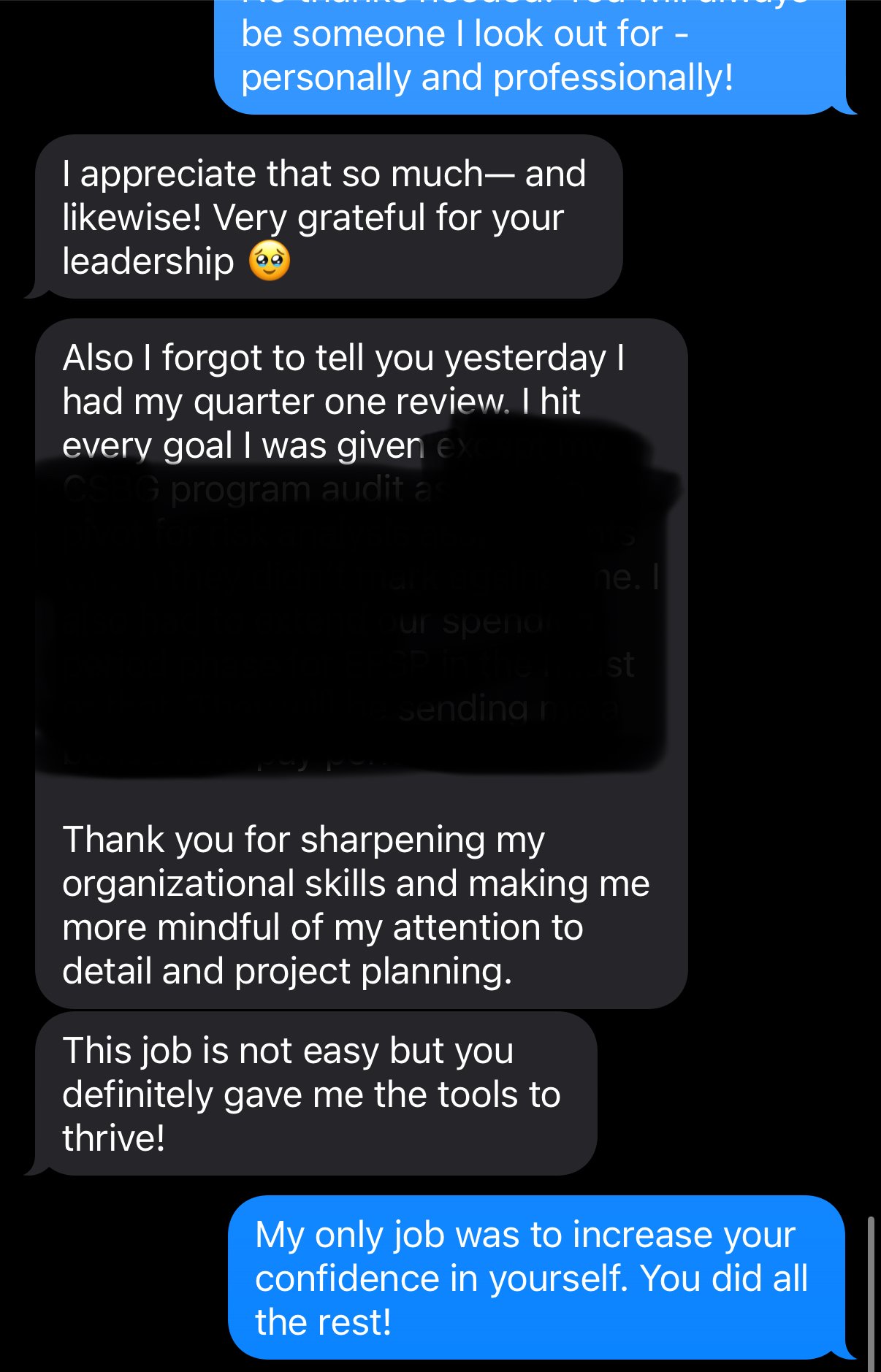Leadership Isn't About Control—It's About Cultivating Confidence
By Ja'Mel Ashely Ware
They say I'm too soft for the military yet too hard for civilians. I wore this paradox for years until I found my leadership groove—not in the rigid structures of traditional hierarchies but in the dynamic world of entrepreneurship and the pursuit of growth. My leadership journey wasn't shaped by textbook strategies alone; it was refined in real time, working with young entrepreneurs and high performers who, like me, value autonomy, trust, and clear direction over micromanagement and empty affirmations.
It wasn't until I pursued my MBA at Emory University that I realized the core of my leadership strength: I thrive working with self-starters—people who don't wait to be told what to do but instead ask how they can do it better. High performers don't need constant hand-holding; they need vision, space to create, and leaders who trust them to do the job.
And that's where my leadership philosophy begins.
1. Trust First, Correct Later
One of the quickest ways to kill creativity and drive is through micromanagement. In my world, if you were hired, I trust that you know what you're doing. If you don't, it becomes evident soon enough, and we course-correct. But for the vast majority—those hired in confidence—constant oversight becomes a hindrance, not a help.
Instead, I lay out a clear and concise plan. People need to know the end goal, the objectives, and the "why" behind their tasks. But I don't dictate how to get there. High performers thrive when given autonomy, and research backs this up—autonomous leadership has increased engagement, innovation, and job satisfaction (Marlow et al., 2018).
Even more compelling, a study published in ResearchGate found that job autonomy directly correlates with higher employee engagement, especially in turbulent times. Employees who feel trusted to make decisions and manage their workload show higher motivation and resilience (ResearchGate, 2021).
2. Speak Their Language
One of the most overlooked aspects of leadership is communication—not just that you communicate, but how. Every person processes information differently. Some are verbal learners, others need things written down, and some thrive with visual aids. In every meeting I run, all three methods are present.
This isn't just a thoughtful gesture; it's strategic. Studies in organizational psychology emphasize that diverse communication styles increase understanding, reduce errors, and boost overall team performance (Birkman, 2023). When people feel seen and heard in a way that makes sense to them, they show up fully.
3. Build Confidence, Not Dependence
One of the most powerful messages I've ever received from a team member was simple: "Thank you for sharpening my organizational skills and making me more mindful of my attention to detail and project planning. This job is not easy, but you definitely gave me the tools to thrive!"
Here's the thing: I didn't "give" them anything they didn't already have. My role was to help them see it in themselves. Leadership isn't about handing out answers—it's about assisting people in building the confidence to find their own.
That's why I rarely offer unsolicited advice. When someone comes to me with a problem, my first question is: "Do you want me to just listen, or are you looking for advice?" It's a small question with a significant impact. It builds trust, reinforces self-reliance, and prevents leaders from becoming crutches for their teams.
4. Focus on Outcomes, Not Hours
I don't clock hours; I clock results. Task completion, accuracy, and initiative—these are my metrics. Why? Because life happens. I don't need to know why someone unexpectedly took a long lunch or worked from home. If the work is done and done well, that's what matters.
This flexibility isn't just about being a "cool boss." It creates loyalty, increases productivity, and reduces burnout. In fact, studies have shown that task-oriented leadership—where outcomes are prioritized over processes—leads to higher efficiency and stronger team cohesion (Marlow et al., 2018).
The Bottom Line: Leadership Isn't Parenting
I'm not anyone's parent or guardian—I'm a colleague with a title. My job isn't to control but to steer the ship forward. That means building trust, empowering self-starters, and ensuring everyone's rowing in the same direction.
This style isn't for everyone. I'm not here for those who want constant reassurance or need their hands held through every task. I'm here for the grinders, the thinkers, the doers—the ones who see leadership not as a safety net but as a springboard.
In the end, leadership isn't about you. It's about what you can pull out of others. And the best leaders? They don't create followers—they create more leaders.

